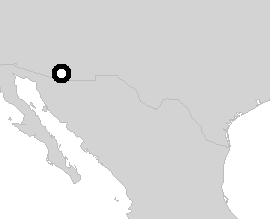
| www.CuriousTaxonomy.net |
|
The Flood in World Myth and Folklore
Southwest |
| © 2021 Mark Isaak |

Back when the sun was closer to the earth, Coyote foresaw the coming of a flood, gnawed down a great tree, entered it, and sealed the opening. Montezuma, who was the first person created by the Great Mystery, took warning from Coyote and prepared a dugout canoe for himself atop Monte Rosa. Only they survived the flood, which covered all the land. They met again on the top of Monte Rosa, which rose above the flood waters. To ascertain how much dry land was left, the man sent Coyote to explore. Coyote reported that there was sea to the west, south, and east, but seemingly endless land to the north. The Great Spirit, with the help of Montezuma, restocked the earth with men and animals. Montezuma, with Coyote's help, taught them and led them. Montezuma later became prideful and rebelled against the Great Mystery, thus bringing evil into the world. The Great Mystery raised the sun to its present height and, with an earthquake, destroyed the tower that Montezuma was building into the heavens, in the process changing languages so that people could no longer understand animals or other tribes.
Erdoes & Ortiz, 1984, 487-489; Frazer, 1919, 281-282.

Henriette Roshschild Kroeber, "Traditions of the Papago Indians," Journal of American Folk-Lore 25 (1912): 97-99. Variants: Mary L. Neff, "Pima and Papago Legends", Journal of American Folk-Lore, 25 (1912), 51-52; Frances Densmore, Papago Music, Bureau of American Ethnology Bulletin 90 (Washington, DC: Government Printing Office, 1929), 17-19.

Coyote was walking along, not paying attention, heedless that it had rained and snowed in the high mountains, and that the water was rushing down the valley towards him. When he suddenly noticed what was happening, he quickly climbed a tree and waited for the water to recede.
While he sat there, a Crane flew to a neighboring tree. The bird sang, "It is going down, it is going down, it is getting less, it is getting less, it has gone down." Each time he came to the word "down," he stretched out his foot and brought up mud to show that the water was receding. Coyote repeated the Crane's song and imitated his actions, but because of his shorter legs and higher tree, his efforts accomplished nothing.
When the water had gone down enough, Crane stepped down and invited his neighbor to do the same. Unwilling to be taunted, Coyote did so. But the water was still deep and fast, and he was carried along in the flow. He almost drowned, but Crane, out of sheer pity, carried him to shore. Coyote blamed the accident on Crane's having longer legs and said, probably insincerely, "Since you have saved my life, I will someday try to do something for you."
Henriette Roshschild Kroeber, "Papago Coyote Tales," Journal of American Folk-Lore 22 (1909): 342.
